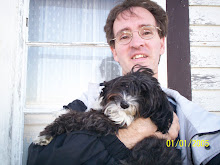Guide to helping dogs with arthritis, helping older dogs with arthritis, ways to help dogs with arthritis, what can help dogs with arthritis, does asprin help dogs with arthritis, does tumeric help dogs with arthritis, foods to help dogs with arthritis, does acupuncture help dogs with arthritis, does massage help dogs with arthritis, medicine to help dogs with arthritis
#helping dogs with arthritis #helping older dogs with arthritis #ways to help dogs with arthritis #what can help dogs with arthritis #does asprin help dogs with arthritis #does tumeric help dogs with arthritis #foods to help dogs with arthritis #does acupuncture help dogs with arthritis #does massage help dogs with arthritis #medicine to help dogs with arthritis
Dog's Arthritis - What is it?
Dog's Arthritis involves inflammation of one or more joints. This can cause pain and stiffness.
Osteoarthritis - a degenerative joint disease - is the most common form in dogs. It is due to wear and tear or joint injuries which causes pain and inflammation in the joints.
Hip Dysplasia and ligament problems can also cause dog's arthritis.

Which dogs are affected?
Dog's Arthritis is more common in older dogs and obese dogs. Excessive weight puts additional strain on the painful joints of the dogs so correct the dog's diet and avoid obesity in your dog. Large breed dogs are susceptible like Labradors and retrievers but all dogs can get arthritis. As all dogs age this problem may get worse over time. Dog's arthritis may appear after a bumping or straining of a joint.

Common signs of dog's arthritis:
Limping- You may see your dog limping or favouring a leg depending on which leg or joints are arthritic.
Difficulty or slow in getting up - the dog may find it difficult to get into and out of the car and going up and down the stairs.
Spinal Issues - Can occur in various parts of the spine or legs. There could be lameness in one or both hind legs. Abnormal posture with a hunch back.
Tiredness - The dog may tire easily so that he walks shorter distances and it is more painful for your dog. The dog may sleep or rest more.
Irritable - The dog may snap or bite when handled if they're in more pain.
Muscle Wastage - The dog uses their muscles less because of the arthritis causing atrophy so the muscles in their legs will look thinner than a normal dog's leg.
Licking, Chewing & Biting - The dog may lick, chew or bite the body areas that are more painful which can cause inflamed skin and hair loss at that area.
Swelling and thickening - of the structures of the joint.
Stiffness - all over.
Mobility - Is less which also means that the dogs may soil themselves (urine, feces or both). Clean them as soiling can cause a 2nd bacterial urinary tract infection. Also make sure that they can get to their food and water bowels near their bed and easy for them to reach.
Gait - Abnormal including inability to walk, knuckling, limb incoordination, lameness, unsteadiness, painful walking, limping while walking, arching of the back, staggering, favouring a side and showing signs of weakness.
Diagnosing the disease
To read more on this article go to my new blog posts here: Dog's Arthritis - Ways to Help Them!




No comments:
Post a Comment